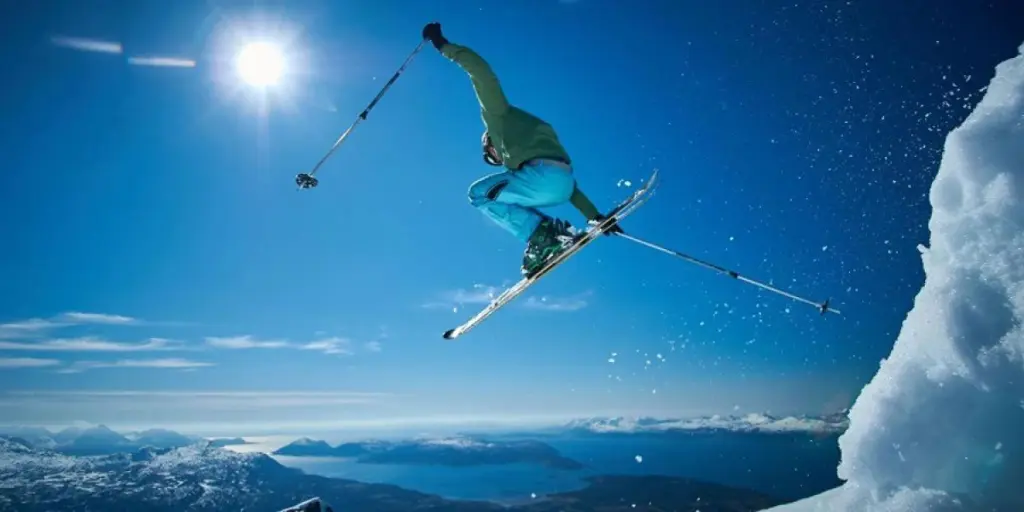Table of Contents:
Introduction
2024 Ski Market Analysis
Ski Selection Essentials
Top Skis & Technology
Conclusion
Introduction
As we usher in 2024, understanding the interplay between advanced materials, design innovation, and consumer expectations is more critical than ever to guide your clients towards the ideal ski selection. This year’s market not only reflects a wide array of sophisticated designs suited for varying terrains and skills but also underscores a growing commitment to performance and sustainability. Our comprehensive guide is crafted to demystify the complex landscape of modern skiing, offering you the insights to make informed decisions.
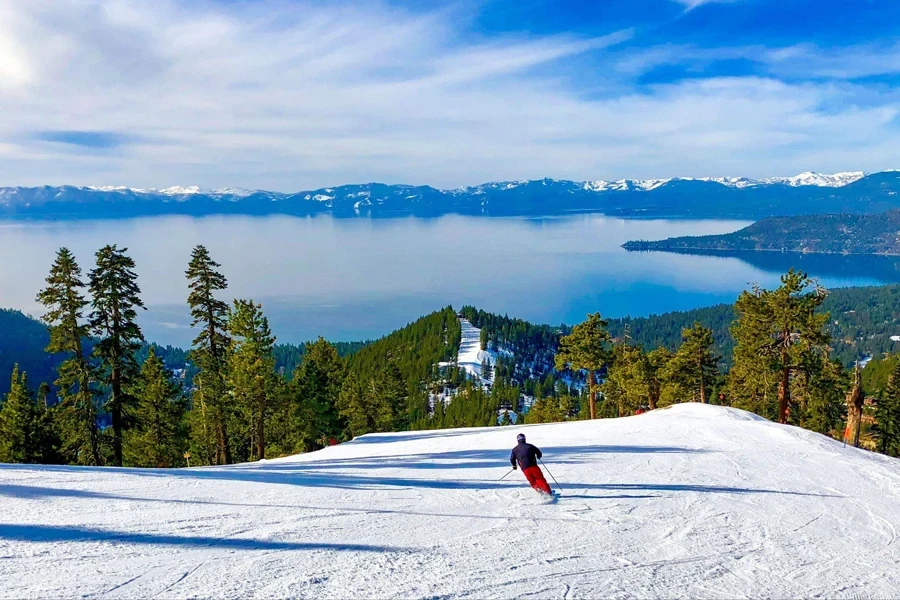
2024 Ski Market Analysis
The ski industry is poised for continuous growth, with a global market size valued at over USD 1.70 billion in 2023 and expected to expand at a CAGR of 3.2% between 2024 and 2032, reaching approximately USD 2.26 billion by 2032. As skiing continues to be a popular recreational activity and mode of snow transportation, innovations and developments in ski equipment and infrastructure are driving the market forward.
The market is seeing the increasing popularity of stylish and fashionable ski equipment, including designer ski clothing, diverse styles of skis, and various types of protective gear. In addition, there’s a shift towards more specialized and technologically advanced equipment. Ski protective gear and accessories, including advanced headgear and innovative ski wear garments, are anticipated to lead market segments over the forecast period.
As the infrastructure related to skiing expands globally, the ski market is benefiting from the enhanced consumer demand for snow-related recreation and tourism activities. The development of ski resorts and the promotion of skiing by various governments are expected to contribute significantly to the market growth. Notably, the ski market thrives during the snow season, making regions like the United Kingdom, continental Europe, and the United States critical markets due to their robust skiing culture and consumer base.

Ski Selection Essentials:
Understanding Ski Types:
1. Piste Ski (On-Trail):
- Width: Typically under 85mm for quick edge-to-edge transitions. This narrow width is ideal for groomed runs and allows for precision turning.
- Length: Generally, the proper ski length for piste skiing is somewhere between your chin and the top of your head. The exact size depends on your skiing ability and style. Longer skis offer more stability at high speeds, which is preferred by many piste skiers.
2. All-Mountain Ski:
- Width: Varies widely to cater to different conditions, generally ranging from 80mm to 110mm. Narrower widths are preferred in regions with groomed runs, while wider skis are better for areas with more powder.
- Length: All-mountain skis offer a balance between maneuverability and stability. The length should be chosen based on your height, weight, and skill level, with considerations for your preferred terrain.
3. Powder Ski:
- Width: Typically much wider to provide flotation in deep snow, often exceeding 110mm. The wide base helps keep the skis on top of the snow.
- Length: Powder skis are usually longer to provide better stability and flotation in deep snow. However, some may prefer slightly shorter lengths for maneuverability in trees and tight spaces.
4. Race Ski:
- Width: Generally narrower to ensure quick edge-to-edge response and precision. The width is optimized for maximum speed and carving ability on hard-packed snow.
- Length: Race skis are often longer to provide a stable platform at high speeds and during aggressive turns. The length can vary based on the type of racing and personal preference.
5. Skate Ski:
- Width: Skate skis are narrow, aiding in the quick lateral movements required in this style. The width is optimized for speed and glide efficiency on groomed trails.
- Length: Generally shorter and stiffer than classic cross-country skis, providing better stability and glide at higher speeds. The length is typically chosen based on the skier’s height and weight.
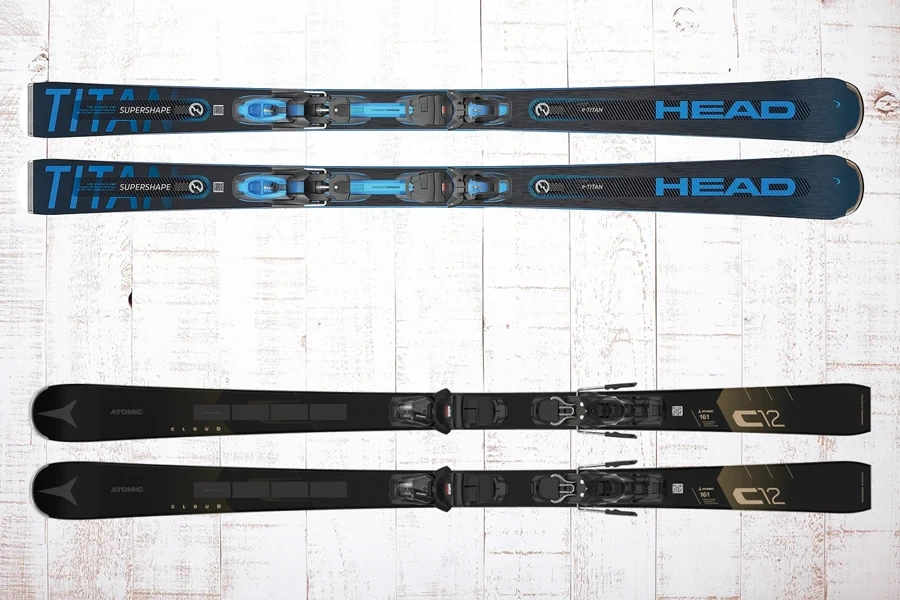
Assessing Skill Level and Style:
- Beginner to Intermediate: Look for skis with softer flex and more forgiveness. Retailers should offer various options that cater to skill progression.
- Advanced to Expert: Prefer stiffer, more aggressive models. Retailers might offer custom ordering or high-end models for this discerning customer base.
NOTE: Track Division & Suitable Level: The retailers can recommend their customers with the standard of ski tracks to lock in the right resort.
Green Circle (Beginner):
- Typically the easiest slopes at a ski resort, with a gentle gradient suitable for first-time skiers and those looking to build their basic skills. These slopes are usually wide and well-groomed, offering a safe environment for learning with slopes often less than 25% gradient.
Blue Square (Intermediate):
- These slopes are more challenging than green runs and offer a steeper gradient, usually between 25% and 40%. They’re designed for skiers who have a good grasp of the basics and are ready to tackle more varied terrain and moderate speeds.
Red Square (Advanced Intermediate):
- Not found in all regions, especially in North America, red slopes offer a stepping stone between blue and black runs. They’re typically found in European ski areas and represent a more serious challenge with steeper gradients and potentially more variable conditions.
Black Diamond (Advanced):
- With gradients typically above 40%, these slopes are steep and may include bumps, narrow passages, or other natural and artificial obstacles. They are best suited for advanced skiers who have excellent control and can handle challenging terrain.
Double Black Diamond (Expert):
- These are among the most challenging and steepest slopes at a ski resort, often with gradients exceeding 50% or more. Suitable for expert skiers, these runs can include cliffs, very steep chutes, and other high-risk features requiring superior skill and experience.
Off-Piste or Backcountry:
- Terrain outside the marked and patrolled areas of the ski resort. This terrain can vary greatly and is only recommended for highly experienced skiers with knowledge of avalanche safety and proper equipment. The gradient can vary widely, and the difficulty is often increased by variable snow conditions and additional hazards not found on groomed trails.
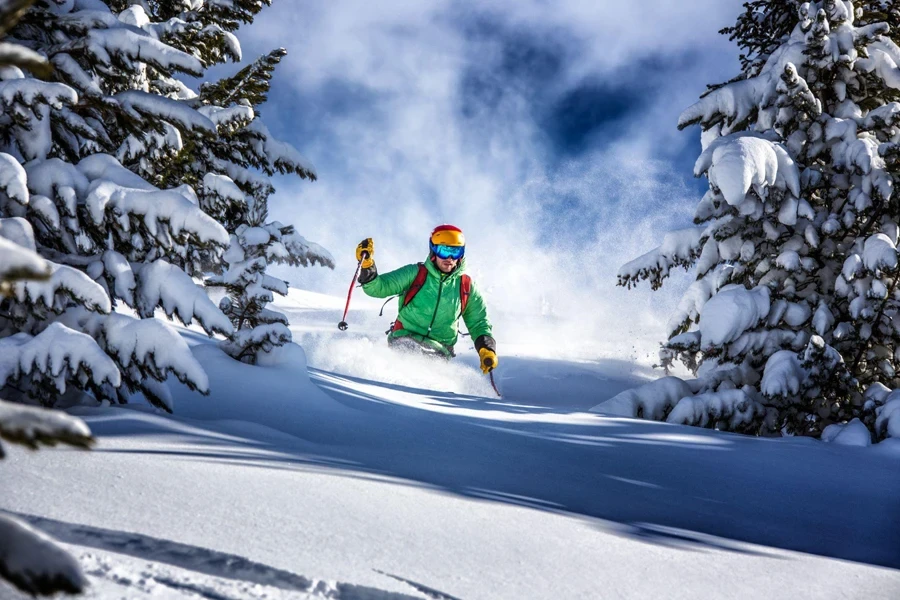
Materials & Technology:
Common Materials in Ski Construction:
- Wood: The most universal and important element in ski construction. Different types of wood like Aspen, Poplar, Fir, or Maple are selected for different types of skis based on their weight, dampening properties, and rigidity.
- Metal: Often aluminum alloys are woven into the ski to stiffen up the rigidity and cut vibrations, especially at higher speeds.
- Fiberglass and Carbon: Used to add stability without significantly increasing weight. Carbon is especially popular for its strength-to-weight ratio.
- Plastic and Rubber: Used in various components of the ski for flexibility, durability, and vibration absorption.
Eco-Friendly and Sustainable Practices:
- Retailers can highlight skis made from sustainably sourced wood or recycled materials.
- Emphasizing brands that use eco-friendly manufacturing processes or contribute to environmental causes can attract conscious consumers.
Sidecut and Profile:
Sidecut:
- Traditional: A single radius curve from tip to tail. It’s the most common and offers predictable and consistent behavior.
- Progressive: Incorporates multiple radii along the length of the ski, often with a tighter radius at the tip for quick turn initiation and a longer radius towards the middle and tail for stability.
- Tapered: The widest points of the ski are moved towards the center, reducing the tip and tail width. This can make the ski less “hooky” at the ends, allowing for a more playful, easy-to-pivot feel, especially in soft snow.
Profile:
- Rocker: Often referred to as “early rise,” “reverse camber,” or “negative camber,” rocker describes a ski with only moderate edge contact with the snow. The middle section of a rockered ski lays flat on the ground while the tip and tail turn upward. It makes it easier to initiate and exit turns and aids in flotation, especially on powder days.
- Camber: The opposite of rocker, camber describes the shape of a more traditional ski with a moderate upward curve. A cambered ski on a flat surface will have an upturned waist, and the tip and tail of the ski will lay flat on the ground. Camber provides edge contact with snow when a turn is initiated, offering a transmission of power from skier to ski that is hard to beat.
Construction Types:
- Cap: The top sheet of the ski folds over the edge of the ski, protecting the core and improving durability. Skis with cap construction are often lighter and easier to initiate turns on.
- Sandwich: Layers materials like wood, carbon, and metal between the ski top sheet, the ski base, and plastic sidewalls.
- Half Cap: A blend of cap construction on the top of the ski and sandwich construction on the bottom, producing a ski that is lightweight with great power transfer.

Top Skis & Technology
The 2024 ski season brings an exciting array of skis featuring advanced technologies and designs tailored for various skill levels and terrains. Here are some top skis to consider:
Nordica Enforcer 100:
- Technology & Design: A stalwart in the all-mountain category, the Enforcer 100 is known for its stability and prowess in crud. The 2024 model sees a lighter construction without losing its aggressive edge, thanks to a new carbon-reinforced chassis and True Tip Technology, reducing swing weight and enhancing responsiveness. It’s designed for advanced skiers who want a ski that can handle speed and varied conditions without sacrificing agility.
- Suitable Ski Level & Terrain: Best suited for advanced to expert skiers, it excels off-piste and in variable conditions but requires a skilled skier to truly unlock its potential.
Völkl M6 Mantra:
- Technology & Design: The M6 Mantra continues Völkl’s legacy of producing hard-charging skis with impeccable edge grip. The latest model features the brand’s Tailored Titanal Frame, providing a customized flex pattern based on the ski’s length, and 3D Radius Sidecut, allowing for dynamic turn shapes. This ski is ideal for advanced to expert skiers looking for a versatile yet powerful ski for on and off-piste adventures.
- Suitable Ski Level & Terrain: Ideal for expert skiers who love speed and precision, particularly in hard snow and groomed trails.
Peak 98 by Bode (Bode Miller’s line):
- Technology & Design: Bode Miller’s signature ski, the Peak 98, emphasizes a versatile all-mountain experience. It incorporates an Adaptive Contact Length, allowing the ski to change its effective edge based on the skier’s speed and turn shape. The ski’s core is a mix of poplar and beech, providing a balance of lightness, stability, and energy transfer, making it suitable for intermediate to expert skiers who value adaptability.
- Suitable Ski Level & Terrain: Intermediate to expert skiers will find it versatile enough for groomers and capable in the soft snow.
Rossignol Sender 94 Ti:
- Technology & Design: This ski targets those who crave a mix of on-piste precision and off-trail agility. The Sender 94 Ti features a titanal beam and Rossignol’s Line Control Technology, reducing counter-flex and ensuring smooth, powerful turns. The ski’s Progressive Sidecut creates a playful and maneuverable feel, ideal for advanced skiers who enjoy a mix of speed and playfulness.
- Suitable Ski Level & Terrain: Aimed at advanced skiers who need a dependable ski for mixed conditions. It’s great for both groomers and steeps.
Blizzard Rustler 9:
- Technology & Design: Known for its blend of lightness and strength, the Rustler 9 is a freeride-oriented all-mountain ski. It utilizes Blizzard’s Carbon Flipcore D.R.T Technology, featuring a titanal layer that varies in shape and length to enhance stability and control. The ski is designed to be playful and responsive, suitable for intermediate to advanced skiers who want to explore all aspects of the mountain.
- Suitable Ski Level & Terrain: Best for advanced skiers who want a ski that’s as playful in the park as it is stable in crud.
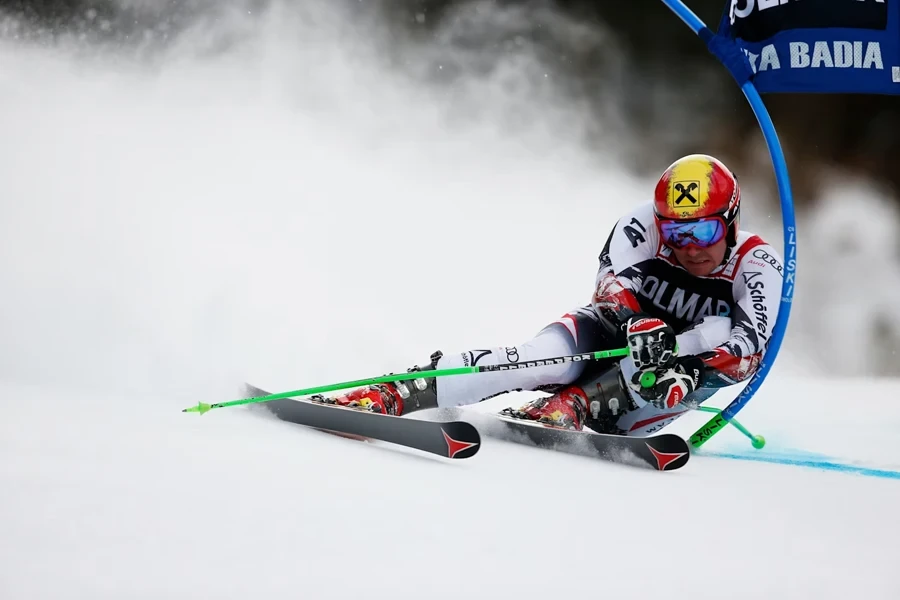
Conclusion
With rapid advancements in technology, an ever-evolving market landscape, and a wide variety of terrains to conquer, choosing the right skis is a crucial decision that enhances performance, safety, and enjoyment in 2024. This guide aims to demystify the process, providing you with a comprehensive understanding of ski types, technology, and market trends, ensuring that every choice you make is informed.
We encourage all business professionals and online retailers in the US ski industry to use this guide as a resource for understanding the nuanced needs of their clientele. Whether your customers are carving down groomed trails or exploring backcountry depths, your expertise in ski selection will not only enhance their experience but also solidify your reputation as a trusted advisor in the ski community.
